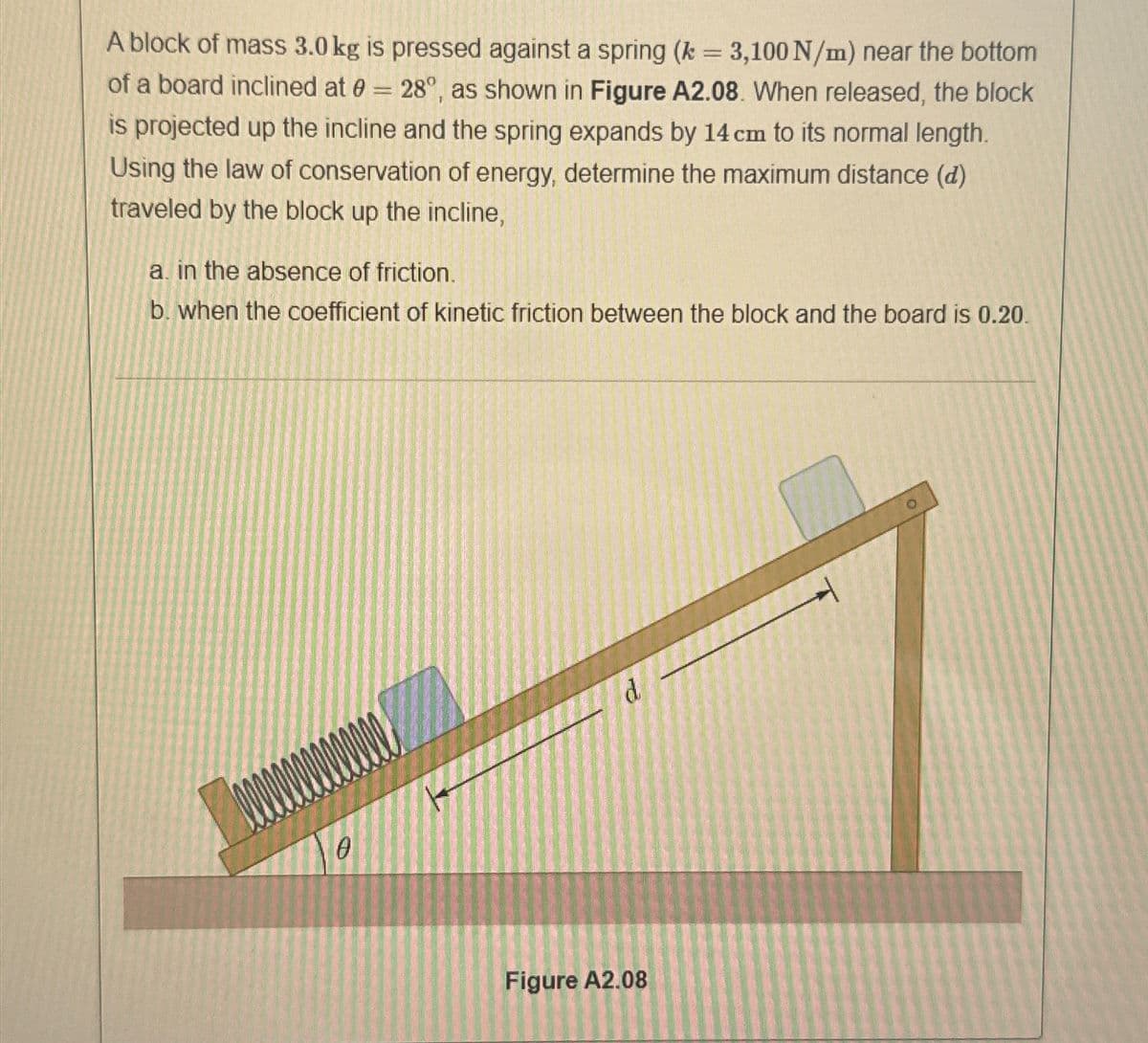A block of mass 3.0 kg is pressed against a spring (k = 3,100 N/m) near the bottom of a board inclined at = 28°, as shown in Figure A2.08. When released, the block is projected up the incline and the spring expands by 14 cm to its normal length. Using the law of conservation of energy, determine the maximum distance (d) traveled by the block up the incline, a. in the absence of friction. b. when the coefficient of kinetic friction between the block and the board is 0.20. Figure A2.08
A block of mass 3.0 kg is pressed against a spring (k = 3,100 N/m) near the bottom of a board inclined at = 28°, as shown in Figure A2.08. When released, the block is projected up the incline and the spring expands by 14 cm to its normal length. Using the law of conservation of energy, determine the maximum distance (d) traveled by the block up the incline, a. in the absence of friction. b. when the coefficient of kinetic friction between the block and the board is 0.20. Figure A2.08
Related questions
Question

Transcribed Image Text:A block of mass 3.0 kg is pressed against a spring (k = 3,100 N/m) near the bottom
of a board inclined at = 28°, as shown in Figure A2.08. When released, the block
is projected up the incline and the spring expands by 14 cm to its normal length.
Using the law of conservation of energy, determine the maximum distance (d)
traveled by the block up the incline,
a. in the absence of friction.
b. when the coefficient of kinetic friction between the block and the board is 0.20.
0
Figure A2.08
d
Expert Solution
This question has been solved!
Explore an expertly crafted, step-by-step solution for a thorough understanding of key concepts.
This is a popular solution!
Trending now
This is a popular solution!
Step by step
Solved in 5 steps with 5 images
